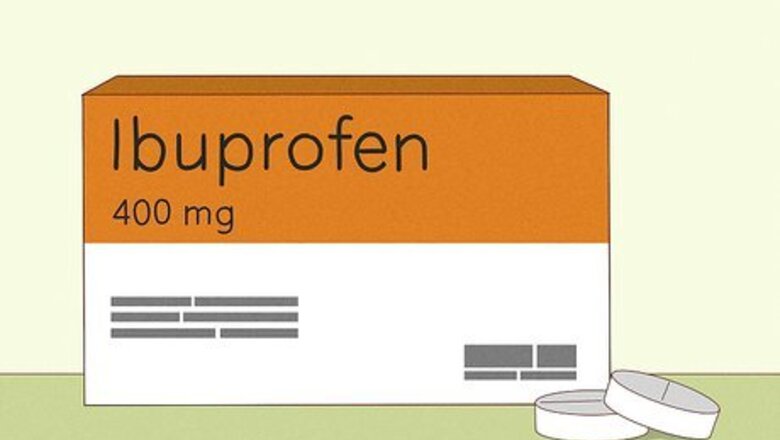
views
X
Research source
While menstrual cramps can range from mildly unpleasant to downright painful, there are a few things you can try to reduce your cramps in the moment and over time.
Take over the counter medication.
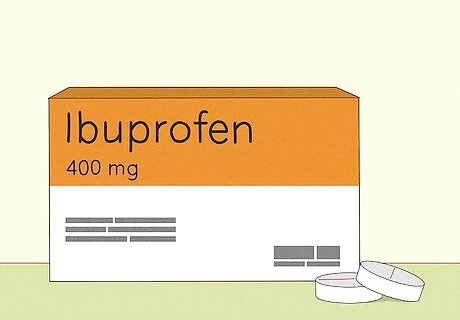
Pain relievers can reduce your menstrual pain fast. Nonsteroidal anti-inflammatory drugs (NSAIDS) like ibuprofen or naproxen are available at most drug stores. Start out by taking 400-600 mg of ibuprofen every 4-6 hours or 800 mg every 8 hours with a maximum dose of 2400 mg daily. Start taking the medication as soon as you feel the cramps coming on, and continue taking them until your cramping has passed. Try ibuprofen brands such as Advil and Motrin. You can also try naproxen brands such as Aleve.
Use a heating pad.

Heat is a very effective way to relieve pain from menstrual cramping. Put a heating pad or a warm water bottle on your lower abdomen or your lower back. Hold it there for 10 to 20 minutes until your cramping starts to feel better. You can also buy heat patches from the drug store that stick onto your skin.
Take a hot bath.

It’s another way of putting heat on your lower abdomen. Fill up your tub with warm water or take a warm shower. Focus on relaxing and letting your abdomen and lower back soak in the water until your cramps feel better. To make it even more relaxing, try lighting a few candles and adding some bath salts to the tub. You can give yourself a nice treat to make up for the pain and discomfort you might be feeling.
Massage your abdomen gently.
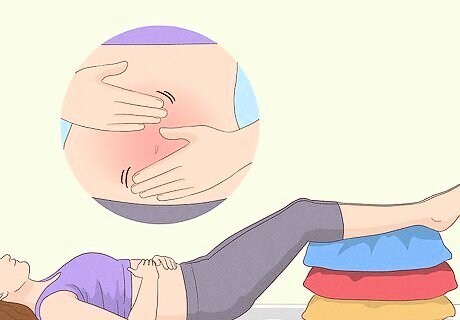
Sometimes, it helps to put gentle pressure on the affected areas. Lie down and prop your feet up. From your reclined position, gently massage your lower back and abdomen. If the massage hurts, try to reduce the amount of pressure you’re putting onto your skin. You can also ask someone else to massage your abdomen for you. However, caution them against going in too hard, and make sure you feel relief instead of more pain.
Do some light exercise.
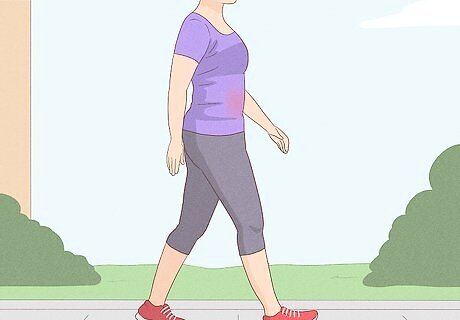
Exercise can help relieve menstrual symptoms in general. Exercise releases endorphins which are natural pain relievers. Endorphins also help counteract the prostaglandins in your body that cause contractions and pain. Because of this, physical activity may help relieve cramps. Try different kinds of aerobic exercise, such as walking, running, cycling, swimming, kayaking, hiking, or a class at the gym.
Meditate or do yoga.
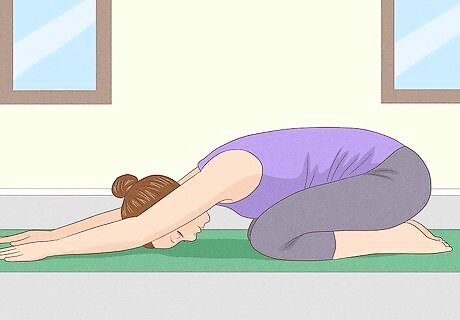
The relaxation aspect can help you cope with pain. If you feel up to it, try doing some simple yoga poses, like downward dog or child’s pose. Or, simply sit quietly for 5 to 10 minutes and try to empty your mind while focusing on your breathing. If you are having trouble meditating for the first time, try looking up a guided meditation video.
Take daily supplements.

Vitamins can help lower menstrual cramps over time. The mechanisms for this are not well understood, but the many dietary supplements have been shown to reduce cramping. Take Vitamin E, omega-3 fatty acids, vitamin B-1 (thiamin), vitamin B-6, or magnesium supplements every day. You can find supplements at most health stores. Always read the dosage instructions on the back, and don’t take more than directed at one time.
Eat foods that fight inflammation.

Less inflammation can lead to less pain during menstruation. Try eating more fruits, vegetables, whole grains, legumes, nuts, and seeds in your daily diet to reduce your menstrual cramps over time. Try to limit the amount of animal fat and oils you eat to avoid making your cramping worse. Try to avoid fatty foods like donuts, cheese, fried food, and chips when you’re on your period. Stay away from refined grains like white bread, refined cereals, and pastries.
Give acupuncture a try.

Acupuncture has been used as a pain relief method for over 2,000 years. In this method, hair-thin needles are placed into the skin at specific locations on your body. The needles do not cause pain for most people, and some find that it reduces menstrual cramps. Although there have been some studies on acupuncture and menstrual cramps, science doesn’t back it up 100% yet. However, it doesn’t hurt to try.
Talk to your doctor about birth control.
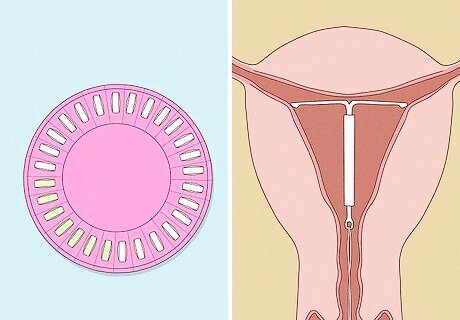
Hormonal birth control can help reduce pain on your period. If you’ve tried every home remedy and it still isn’t working, birth control might be the right choice for you. Make an appointment with your doctor to talk about your options and see if it can help your period pain. There are tons of different kinds of hormonal birth control, including: Birth control pill Birth control patch Birth control implant IUD

















Comments
0 comment